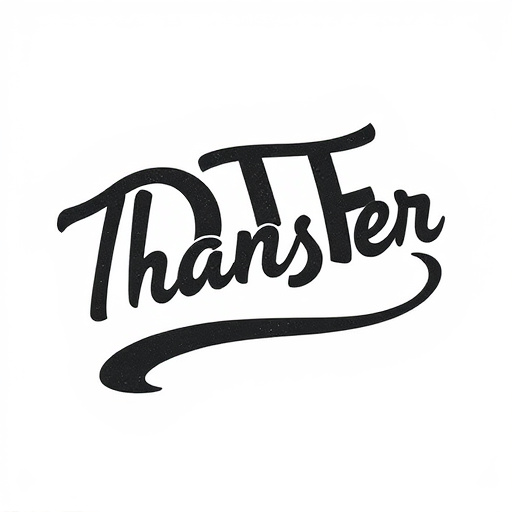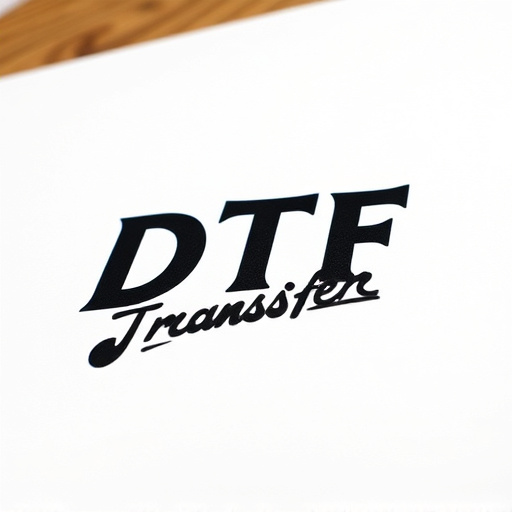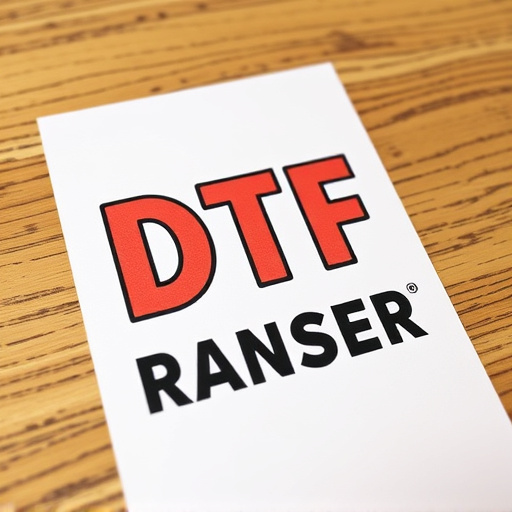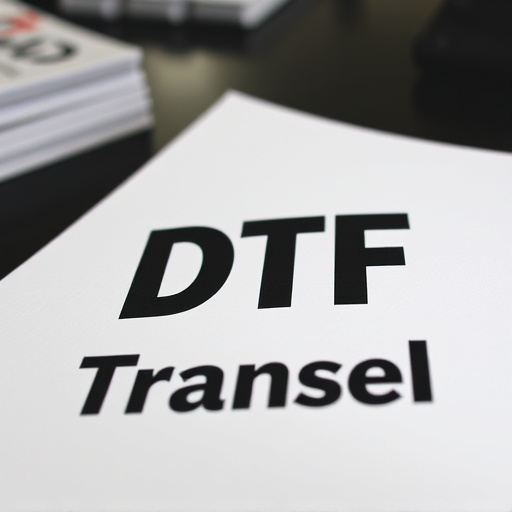In Direct to Film (DTF) processes, carrier film acts as a protective barrier during printing and application. It's crucial for maintaining design integrity, precise alignment, and preventing damage between print head and substrate. After successful DTF transfer, careful removal of the film is key for achieving high-quality results. This involves managing heat-sensitive adhesives, ensuring clean edges, and using techniques like scraper blades or heat guns. Chemical solutions, chosen based on DTF type and substrate, also play a role in post-application cleaning. Optimal DTF print quality requires strict pre- and post-application protocols, clean surfaces, proper storage conditions, and regular equipment maintenance.
“Uncovering pristine DTG prints starts with understanding and mastering the art of carrier film removal. This critical step follows a successful DTF transfer application, yet presents its own set of challenges. From physical techniques like scraping and peeling to chemical solutions offering deep cleaning, this article guides you through proven methods for efficient carrier film elimination. Discover best practices ensuring optimal DTG print quality and preventive measures to avoid future issues in your DTF printing process.”
- Understanding Carrier Film and Its Role in DTF Transfer
- Common Challenges Faced During Carrier Film Removal
- Physical Techniques for Efficient Carrier Film Elimination
- Chemical Solutions for a Thorough Cleaning Process
- Best Practices to Ensure Successful DTF Print Quality
- Preventive Measures to Minimize Future Carrier Film Issues
Understanding Carrier Film and Its Role in DTF Transfer

Carrier film plays a pivotal role in Direct to Film (DTF) transfer processes, acting as a protective layer during the printing and application stages. In DTF printing, this film is essential for maintaining the integrity of the design while ensuring precise alignment during the transfer process. It serves as a buffer between the print head and the final substrate, protecting both from potential damage caused by direct contact.
After the DTF transfer is complete, the carrier film needs to be carefully removed to expose the newly applied DTF prints. This step is crucial as it allows for post-processing tasks like trimming, cutting, or further decoration. Understanding the characteristics of carrier film and its interaction with DTF transfers is essential for achieving high-quality results in various printing applications, ensuring the successful completion of the transfer process and the preservation of the vibrant, precise DTF prints.
Common Challenges Faced During Carrier Film Removal

Removing carrier film after a DTF (Direct to Film) transfer can be a delicate process, often presenting several challenges for printers and applicators. One common issue is the adherence of the film to the substrate, especially when using heat-sensitive adhesives. This may result in partial or complete attachment of the film, causing wrinkles, bubbles, or even damage to the printed surface.
Another challenge lies in achieving a clean edge around the design. Inaccurate application of the DTF print can leave unwanted film residue along the edges, impacting the overall finish and quality of the transferred image. Proper alignment and precise cutting techniques are essential to mitigate these problems, ensuring smooth removal without compromising the integrity of the DTF prints or causing damage to the substrate material.
Physical Techniques for Efficient Carrier Film Elimination
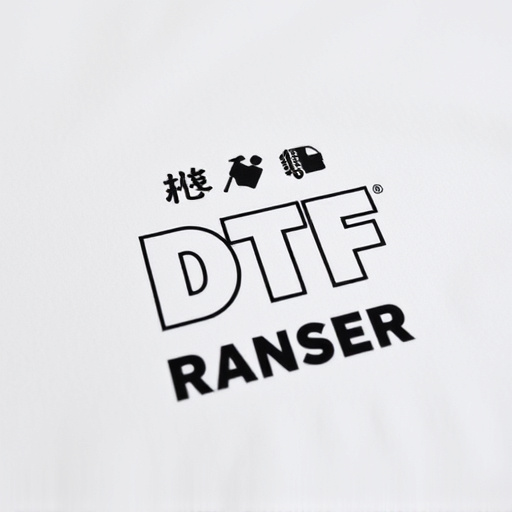
After applying a DTF transfer or DTF printing process, removing the carrier film is a crucial step to ensure optimal results in your final DTF prints. Physical techniques offer an efficient and effective method for achieving this. One widely used approach involves utilizing specialized tools like scraper blades or squeegees to gently lift and strip away the film. This method requires precision and care to avoid damaging the underlying image or substrate.
For a more thorough clean-up, some professionals employ heat as a physical technique. Applying controlled heat with a heat gun can soften the adhesive binding the carrier film, making it easier to peel off. However, this method must be executed cautiously to prevent scorching or distorting the DTF prints. Combining heat with gentle scraping movements often yields the best outcomes in completely eliminating the carrier film, leaving behind crisp and clear DTF transfers or prints.
Chemical Solutions for a Thorough Cleaning Process

After applying a DTF (Direct to Film) transfer or print, one of the critical steps in ensuring optimal results is thoroughly removing the carrier film. Chemical solutions play a pivotal role in this process, offering an effective cleaning method for DTF prints. These chemicals are designed to dissolve and strip away the film, leaving behind only the desired DTF prints on the substrate.
The choice of chemical solution depends on the type of DTF transfer and substrate used. Common options include specialized DTF cleaning solutions that are gentle yet powerful enough to remove residue without damaging the print. These solutions often contain surfactants and solvents that break down the adhesive properties of the carrier film, making it easy to peel away. For best results, follow manufacturer instructions and ensure proper ventilation during the cleaning process to accommodate the chemical fumes.
Best Practices to Ensure Successful DTF Print Quality

To ensure successful DTF (Direct-to-Film) print quality, best practices involve a meticulous pre and post-application process. Before applying the carrier film, it’s crucial to clean the transfer surface thoroughly to eliminate any contaminants that could hinder adhesion. This includes using appropriate cleaning solutions and techniques recommended by the manufacturer to avoid damage to the substrate or ink.
After the DTF transfer is applied, proper removal of the carrier film is essential. Slow and careful peeling is advised to prevent ink smudging or lifting. It’s also important to work in a controlled environment with minimal dust or moisture to ensure the integrity of the freshly printed DTF prints. Using a clean, dry cloth or squeegee can help achieve crisp, clear DTF prints without damaging the design or substrate.
Preventive Measures to Minimize Future Carrier Film Issues

To minimize future carrier film issues after a DTF transfer or DTF printing process, several preventive measures can be taken. Firstly, ensure that the surface where the DTF prints will be applied is clean and free of any contaminants. Any residual adhesive or dirt on the substrate can cause problems when removing the carrier film. It’s also crucial to use high-quality DTF materials from reputable manufacturers; compatible adhesives and films designed for specific substrates will make the removal process easier and reduce potential issues.
Additionally, proper storage conditions are essential. Keep the DTF prints and carrier films in a cool, dry place away from direct sunlight and extreme temperatures. This prevents the film from becoming brittle or losing its adhesive properties over time. Before applying the DTF transfer to your final surface, test it on a scrap piece of material to ensure optimal adhesion and ease of removal. Regularly cleaning your tools and equipment used in the process can also help maintain the integrity of future DTF prints and simplify carrier film removal.








